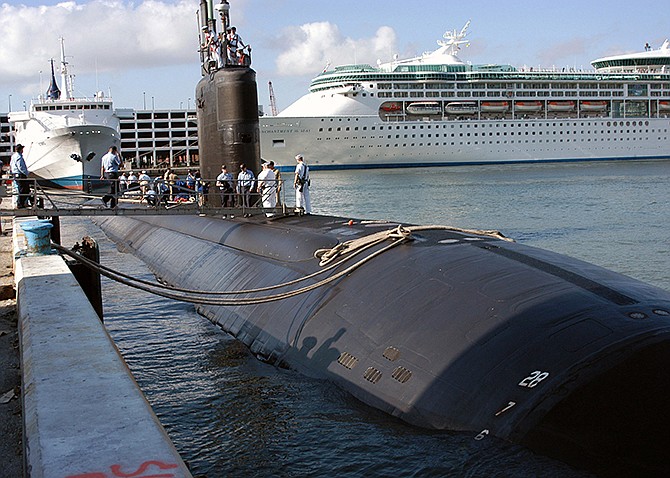PORTLAND, Maine (AP) - Complacency about safety during shipyard repairs and dependency on firefighters who didn't specialize in fires aboard ships contributed to the severity of a blaze that crippled a $900 million nuclear submarine, Navy investigators concluded.
Investigators also said confusion at the start of the May 2012 fire at the Portsmouth Naval Shipyard squandered precious minutes as the fire grew aboard the USS Miami and that there were two hour-long periods in which no water was put on the flames.
The conclusions, some of which were disputed by firefighters, were included in more than 100 pages of documents obtained by The Associated Press under a Freedom of Information Act request.
It took 12 hours and the efforts of more than 100 firefighters to save the Groton, Connecticut-based Miami after a worker who wanted to go home early set a small fire that quickly spread. Though the sub was saved, the Navy ultimately decided to scrap it after the repair bill hit $700 million.
The fire severely damaged living quarters, the command and control center and a torpedo room, but it did not reach the nuclear propulsion components. Seven people were hurt dousing the flames.
"Complacency had set in, based on the infrequency of shipyard fires and relative success of fire prevention measures," the report said. "Also, there was an assumption that the proximity to far more assets, especially federal firefighters, reduced the likelihood of a fire not being quickly contained. This organizational reluctance to prepare for a fire of this scale should serve as a wake-up call - large fires can and do happen in industrial environments."
The Navy launched a series of investigations that led to recommendations, including the installation of temporary automatic fire detection systems while vessels are being repaired or overhauled. It issued a new fire safety and prevention manual.
The Navy says it has learned lessons from the Miami fire and shared them across the fleet.
"We will continue to apply best response practices into shipyard fire emergency plans," Navy spokesman Lt. Timothy Hawkins said Thursday.
Related video report:

